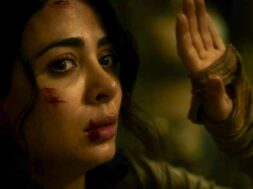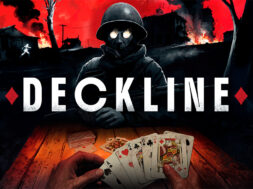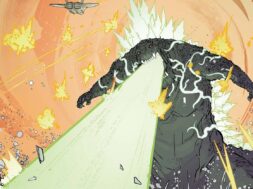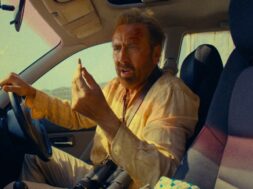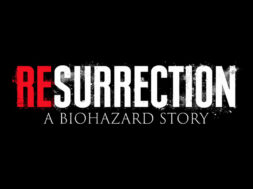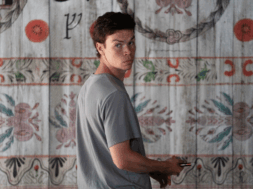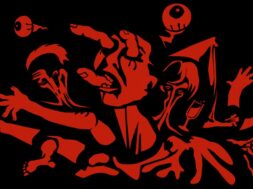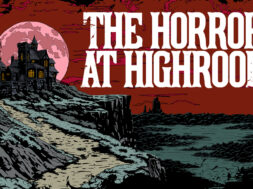It’s easy to cite dozens upon dozens of directors, icons, and even writers that shaped the genre over the decades when looking back at the evolution of horror cinema and its history. But very few producers manage to achieve horror stardom in quite the same way, save for a notable handful of pioneers whose vital work in the genre became too vast to go unnoticed. That’s the case with Val Lewton, a legendary producer who developed a reputation for creating A-movie horror on a B-movie budget by leaning into implied and suggestive horror amidst heavily shadowed landscapes.
The Russian-born father of low budget horror started as a writer at MGM’s publicity office before becoming the right-hand man to famed Hollywood mogul David O. Selznick (Rebecca, King Kong). In 1942, Lewton was hired by RKO Pictures to run a unit dedicated to horror; the studio needed money fast after the commercial failure of Orson Welles’ Citizen Kane and hoped to emulate Universal Pictures’ success with their monster movies. Assembling a group of filmmakers that he’d worked with before, Lewton was given a fraction of Universal’s budget to achieve similar success. That suited Lewton just fine as he felt imagination was the key. He built his films around dread, unsettling atmosphere, and fear of the unseen.
Lewton guided every facet of the movies he made, no matter the director. It was his vision on screen, and he wrote a shooting script for every feature, often using a pen name or working in an uncredited capacity. Lewton guided his directors behind the scenes on ways to build suspense. All of which is why he’s credited for creating the blueprint for the modern jump scare referred to as the Lewton Bus (from Cat People), and known for transforming minuscule budgets into high-art horror. During Lewton’s reign, RKO’s output delivered psychological-based terror, haunting ambiance, progressive commentaries, sexual menace or tension, and, of course, stunning use of darkness and shadows.
When RKO head and Lewton supporter Charles Koerner died in 1946, it put the studio through an upheaval that resulted in Lewton’s ousting. It marked the decline in Lewton’s health; he suffered a minor heart attack shortly after. Through his connections and the merits of a screenplay he wrote, Lewton did find subsequent work at Paramount, where he produced a couple of non-genre features, but the filmmaker suffered an additional series of heart attacks that cut his life short at the age of 46.
In his time at RKO, Lewton produced eleven features- nine of them horror- over just four years. That insane workload, especially with how incredibly hands-on he was with each movie, no doubt attributed to his heart health. A tragic end to a crucial pioneer in the early advent of horror in the sound-era of film, Lewton left an indelible mark.
While any of Lewton’s horror films are worth checking out, here are four movies to get you started.
Cat People
The most well-known of Lewton’s films happens to be the first horror film produced for RKO. It’s also the best entry point. RKO gave Lewton a budget of $150,000 and gave him creative control to handle the rest. He enlisted Jacques Tourneur to direct and Mark Robson to edit. The plot sees Serbian-born fashion illustrator Irena (Simone Simon) struggling with repressed sexuality once she falls for handsome engineer Oliver (Kent Reed). They meet-cute then get married, but Irena refuses to consummate their marriage as she fears physical intimacy will transform her into a predatory cat of Serbian legend. A betrayal and jealousy may indeed trigger the curse anyway. With such a small budget, Tourneur couldn’t precisely create a cat person, so he relied on cinematographer Nicholas Musuraca and stylish lighting to create suspense and fear from implied menace lurking in the shadows. The scene in which Irena stalks her rival Alice (Jane Randolph) on the darkened empty street birthed the Lewton Bus jump scare, but the iconic pool scene that sees Alice tormented by a predator in the dark also stands out.
I Walked with a Zombie
For Lewton’s next production, RKO provided him with a title; I Walked with a Zombie. He instructed his writers to research Haitian voodoo practices and look to Charlotte Brontë’s Jane Eyre for structure purposes. Tourneur and Robson both carried over in director and editor capacity, respectively. In the film, Young Canadian nurse Betsy (Frances Dee) relays how she once walked with a zombie, recounting the tale of her job caring for the wife of a sugar plantation owner on a Caribbean island. The wife, naturally, has been acting very strangely. Voodoo zombies factor into this atmospheric gem in a big way, of course. There’s a dreamlike quality about I Walked with a Zombie, and it was progressive for its time for the somber portrayal of slaves.
The Seventh Victim
The Seventh Victim isn’t as overtly rooted in horror as Lewton’s other films, but it is one of his absolute best. Director Mark Robson begins this noir film like a classic dark mystery; a young woman learns her older sister has gone missing and hasn’t paid her tuition in months. She departs her boarding school and begins her search, meeting several characters along the way that’ll aid and hinder her investigation. Robson weaves in horror ever so slowly, building toward a nihilistic finish as the older sister is revealed to have gotten mixed up in a Satanic cult. This is the film that sparked criticism from a studio exec unhappy that Lewton’s films lacked a message, and Lewton famously retorted, “I’m sorry, but we do have a message, and our message is that death is good.” Outside of its reputation for blending noir and horror and its bleak ending, The Seventh Victim also boldly introduced a Satanic cult among the city’s social elite, way ahead of Rosemary’s Baby.
The Body Snatcher
Loosely based on Robert Louis Stevenson’s “The Body Snatcher” short story, Lewton helped adapt for the screen under the pen name Carlos Keith. Set in Edinburgh, Scotland, in 1831, a ruthless doctor and his young prize student find themselves continually harassed by their murderous supplier of illegal cadavers. Directed by Robert Wise (The Haunting, The Curse of the Cat People), The Body Snatcher stars Universal Studios’ horror icons, Boris Karloff and Bela Lugosi. It turns the tale of famous Scotland serial killers William Burke and William Hare into a fictional account of graverobbing and grisly murder with its own distinct set of characters. The Body Snatcher continues the streak of elevating a meager budget to deliver something haunting and gorgeous. Still, it’s most notable for being the first of three collaborations between Karloff and Lewton. It’s also the best, in terms of Karloff’s masterful performances.

